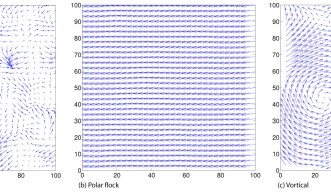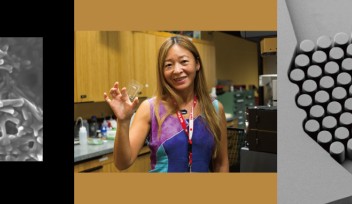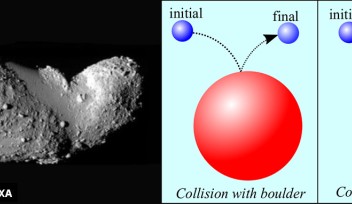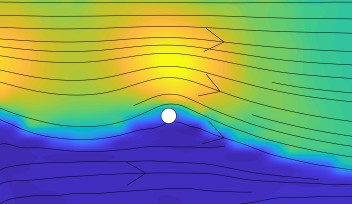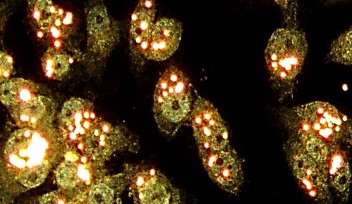Going with the Flow

Previous research has already demonstrated that substantial quantities of self-motile or active agents such as bacteria in a fluid environment can be harnessed to do mechanical work like moving microscopic gears and ratchets. Bacteria as well as algae can also be used to transport or displace matter in fluidic environments. The new research recently published by scientists at the Okinawa Institute of Science and Technology Graduate University (OIST) in the journal Soft Matter carefully examines the relationships between self-motile and passive or inert agents to determine possibility of creating fully synthetic systems by looking into examples of biology interacting with mechanical mechanisms. Denis F. Hinz and Professor Eliot Fried of the OIST Mathematical Soft Matter Unit created the necessary models and investigated how such mixtures can work to achieve desired effects.
One of the best examples of a mixture containing both self-motile and passive agents is that of bacterial colonies. Hinz explains that “Often, such collectives are heterogeneous, meaning they consist of different kinds of bacteria. Some bacteria are self-motile, meaning they are able to move on their own while others are not able to do so.” The aim of the research was to answer fundamental questions about: would it be possible for a set of active or self-motile agents to drive a quantity of passive agents?
Computer simulations were created and analyzed to visualize flow patterns through the adjustment of two parameters: the density of the fluid space, which is dependent on the number of particles or agents in the mixture, and the strength of the self-motile agents to propel themselves. The medium that both agents were in was simulated to have a consistency similar to that of water. After completing the simulations, Hinz and Fried found that three distinct phases manifested depending on the variation of these two parameters: a Mesoturbulent phase, Polar flock phase and Vortical phase. These phases were characterized respectively by flow patterns which were random, aligned along an axis, and those which swirled around individual focal points.
Understanding how and when these kind of flow interactions occur is key in order to figure out how many active agents are necessary to produce a desired flow patterns, as well as to how a particular flow or effect can be achieved most efficiently. Hinz adds “Questions arise such as: Is it more efficient to have a small quantity of very strong active agents or a larger quantity of weaker active agents?” This is particularly important for the creation of completely man-made mixtures because the self-motile particles that can be manufactured to stand in for bacteria, such as Janus particles, light-activated particles, polymer based nanomotors and robotic swarms, are difficult to manufacture.
After reviewing the simulations and subsequent data, it appears as that all three of the dynamic phases and their associated flow patterns could be produced through the use of a relatively low fraction of self-motile agents. These results are promising as they suggest that large quantities of potentially costly and difficult to manufacture particles and nanomachines may not be required to achieve desired flow patterns. These results can serve as the foundation of future research on the wide range of possible applications involving microfluidic processes such as water purification and self-powered drug delivery systems.
By Sean To
Specialty
Research Unit
For press enquiries:
Press Inquiry Form










